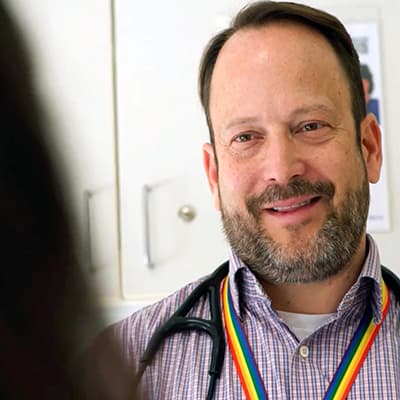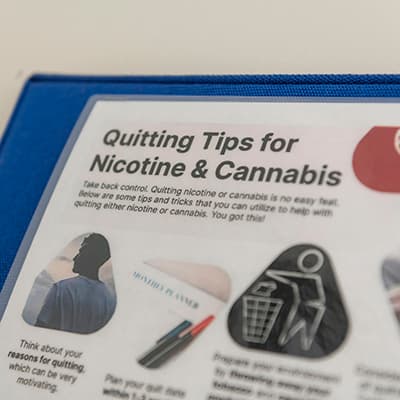Katie’s Story

High school junior Katie* loves all things medicine. Her dream is to become a surgeon and learn everything she can about the human body. When Katie realized that vaping had become an addiction that was harming her own body, she came to see Ryan Pasternak, MD, at the Adolescent and Young Adult Specialty Clinic (AYASC) for help.
“I really wanted to stop,” Katie shared, “but I couldn’t quit cold turkey. Dr. Pasternak was really nice and not judgmental at all.” With the help of nicotine patches, Katie started on the road to overcoming her addiction.
Katie's mom, Sarah, was extremely supportive of Katie’s goal to quit vaping. After reaching out to the family pediatrician, they received a referral to the AYASC. “I wish I had known about this clinic sooner because there’s so many things they do under one umbrella,” Sarah said. “We were very impressed with the clinic. Dr. Pasternak was excellent and really had a connection with Katie.”
The AYASC team specializes in the unique needs of adolescents and young adults, ages 10 to 21. They care for young people who are dealing with issues that are common in the teen population, such as reproductive health, substance abuse and mental health.
“There’s a lot of misinformation out there,” said Rachel Whitfield, APRN, a nurse practitioner in AYASC. “Young people and their families come to us seeking guidance to make informed decisions about their health. We are committed to partnering with them by providing compassionate, judgement-free support and evidence-based information so they can choose the care that best fits their needs and circumstances.”
Vaping is one area where misinformation abounds among young users. “Nicotine is an incredibly addictive substance, and the intent of the products is to addict the person,” said Dr. Pasternak. “It’s the ultimate subscription plan [for nicotine companies]. Some proponents argue that vaping or e-cigarettes are a safe alternative to smoking cigarettes, but that’s simply not true for young people.”
Often, young users of vape products don’t realize that they are consuming other ingredients in the vape fluid in addition to nicotine. “There are a number of impurities, like heavy metals, in vape fluid,” explained Dr. Pasternak. “We’ve seen some really serious lung damage, including a type of lung injury similar to popcorn lung [e-cigarette- or vaping-associated lung injury].”

Luckily for Katie, her decision to quit vaping and seek treatment helped her lungs begin to heal. An avid hockey player, Katie had noticed the impact vaping had on her athletic performance, which was one of the reasons that compelled her to get help at the AYASC.
“Everyone there was just genuinely nice and welcoming, and they really know what they’re doing,” Katie said.
With her recovering lung capacity, Katie was able to take a month-long trip to Tanzania last summer. She volunteered at a local school, hiked Mt. Kilimanjaro and even experienced a 5-day safari. “Dr. Pasternak helped me believe I could get better,” Katie shared. “He said, ‘This is just a mistake you made — you're going to be fine. Your lungs will recover.’”
With vaping in the rearview mirror, Katie can continue to look ahead at her goals for medical school and a healthy, active life.
*Patient and family member names have been changed to protect privacy.